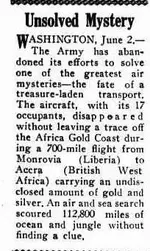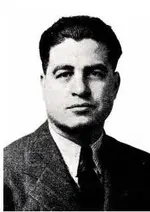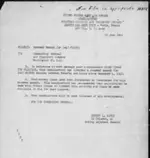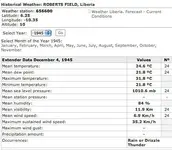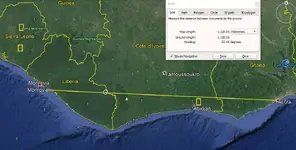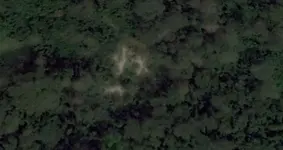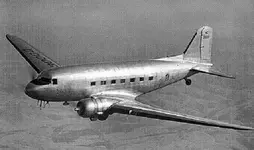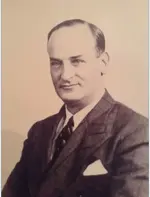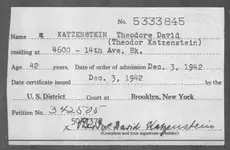Crow
Silver Member
- Joined
- Jan 28, 2005
- Messages
- 4,050
- Reaction score
- 11,264
- Golden Thread
- 0
- Location
- In a tax haven some where
- Detector(s) used
- ONES THAT GO BEEP! :-)
- Primary Interest:
- Other
Gidday Loke some things are better left unsaid. Some times history totally forgets things. And to some that is a tactical advantage to take advantage of.
Here is another quick yarn for you. Not exactly a DC 3 but a DC4
The flight began uneventfully, with the hulking DC-4 propeller plane, loaded down with gold, rising up from a remote airstrip near a northern B.C. mine.It was headed to nearby Alaska where its 16,600 pounds of gold concentrate would be processed. It's a coarse, grainy substance of varying quality – nothing like solid gold, but nonetheless valuable.
At 460 metres (1,500 feet) above sea level, things went wrong. The No. 2 engine whined, cut out and fell off the left wing altogether. The plane banked right to return to the airstrip, but the other three engines couldn't support the weight, sending it crashing onto a sandbar along the raging Iskut River, not far from the mine, on Aug. 14, 1996. The pilot's body was never recovered, while the two other crew members made it to shore.
So began a mystery of a doomed B.C. plane and its load of gold, a tale emerging again after the plane reappeared – empty. Barrick Gold, which had since bought up the smaller outfit that owned the now-closed mine, rushed to the remote crash site and, this week, reported that the plane had already been stripped clean. The company does not know where the gold is.
Shortly after the crash, the Transportation Safety Board conducted an investigation, which essentially ruled the tragedy bad luck – the 51-year-old plane wasn't overloaded and had been properly maintained. But all the TSB could examine was one wing and the No. 2 engine, found four kilometres away. By the time inspectors had arrived, the wreckage was buried by sand and water in the fast-moving river, entombed.
That is, until early last fall, when the shifting sands of the river lifted the plane into sight again. Work crews in the remote area noticed it in late September.
"I knew right away which aircraft it was, and whose it was originally," recalled Dave Yeager, a geologist who flew over the wreckage while working with a company now called SnipGold Corp. The plane appeared heavily damaged, most of its paint stripped off. The large industrial bags of gold come with opened tops, and might have been washed clean by the fast-moving water.
"More and more of the plane got exposed as time went on," Mr. Yeager said, adding people in the area all knew about the crash, and would know what had been on board. Rumours began to spread that a local trapper had first noticed the plane had resurfaced from the sandbar, and had begun hauling out gold concentrate, bit by bit. "It became lore, yeah. There were those who knew, and I mean it was a remote area," Mr. Yeager said.
Word spread, and reached Barrick Gold, the world's largest gold mining company that had bought up the smaller outfit. There had been other crashes in the area, and the company wasn't sure at first it was even the same DC-4 – or what might be on board the plane. But it was racing weather as winter bore down. By Nov. 5, two days after it received word, a Barrick crew was on the ground at the remote crash site near the Bronson Creek in northwest B.C. It was the same plane.
Someone had beat them to it.
"Upon examination, it became apparent that the roof of the aircraft had been cut off using professional tools and that there was no remaining cargo in the hold. There was evidence that the aircraft had been tied to a tree following the crash," spokesman Andy Lloyd said this week in an e-mailed statement.
"Piecing the story together from accounts of parties that were in the area at the time and subsequent reports, we believe mine personnel salvaged the cargo of gold concentrate and the avionics at the time of the crash."
Of the old company, Homestake Canada, stripped the plane, it did so before the TSB had a chance to inspect it. Barrick's account is also at odds with that of Air North Ltd., a Whitehorse-based airline that owned the plane. Owner Joe Sparling sold the salvage rights, but declines to say who bought them – only that, well after Barrick visited to find the plane stripped and emptied of gold, the salvager hadn't gone to the site. "Salvage guy has not been able to access the aircraft yet," Mr. Sparling said in an e-mail this spring.
According to Barrick this week, there's nothing left to salvage. Several industrial-sized bags of concentrate, roughly 3,000 pounds each, are gone. Barrick declines to estimate the value, saying it's "difficult to extrapolate exactly how much gold was contained in this concentrate." Mr. Yeager describes concentrate as similar to powdered cement. The price of gold, however, is four times what it was at the time of the crash.
Nearby Mounties say they haven't been called, Barrick considers it case closed and Mr. Sparling has remained tight-lipped. The TSB report, meanwhile, never speculated on what happened to the gold. All that remains is the wreckage, its paint stripped, its top pried open and its cargo hold empty – the Iskut River raging around it.
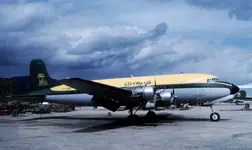
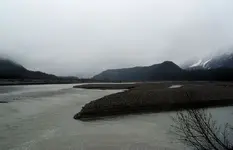
Did some one get lucky Or was it washed out of the wreck ?
This is just one of many stories of missing gold in regards to aircraft.
Crow

Here is another quick yarn for you. Not exactly a DC 3 but a DC4
The flight began uneventfully, with the hulking DC-4 propeller plane, loaded down with gold, rising up from a remote airstrip near a northern B.C. mine.It was headed to nearby Alaska where its 16,600 pounds of gold concentrate would be processed. It's a coarse, grainy substance of varying quality – nothing like solid gold, but nonetheless valuable.
At 460 metres (1,500 feet) above sea level, things went wrong. The No. 2 engine whined, cut out and fell off the left wing altogether. The plane banked right to return to the airstrip, but the other three engines couldn't support the weight, sending it crashing onto a sandbar along the raging Iskut River, not far from the mine, on Aug. 14, 1996. The pilot's body was never recovered, while the two other crew members made it to shore.
So began a mystery of a doomed B.C. plane and its load of gold, a tale emerging again after the plane reappeared – empty. Barrick Gold, which had since bought up the smaller outfit that owned the now-closed mine, rushed to the remote crash site and, this week, reported that the plane had already been stripped clean. The company does not know where the gold is.
Shortly after the crash, the Transportation Safety Board conducted an investigation, which essentially ruled the tragedy bad luck – the 51-year-old plane wasn't overloaded and had been properly maintained. But all the TSB could examine was one wing and the No. 2 engine, found four kilometres away. By the time inspectors had arrived, the wreckage was buried by sand and water in the fast-moving river, entombed.
That is, until early last fall, when the shifting sands of the river lifted the plane into sight again. Work crews in the remote area noticed it in late September.
"I knew right away which aircraft it was, and whose it was originally," recalled Dave Yeager, a geologist who flew over the wreckage while working with a company now called SnipGold Corp. The plane appeared heavily damaged, most of its paint stripped off. The large industrial bags of gold come with opened tops, and might have been washed clean by the fast-moving water.
"More and more of the plane got exposed as time went on," Mr. Yeager said, adding people in the area all knew about the crash, and would know what had been on board. Rumours began to spread that a local trapper had first noticed the plane had resurfaced from the sandbar, and had begun hauling out gold concentrate, bit by bit. "It became lore, yeah. There were those who knew, and I mean it was a remote area," Mr. Yeager said.
Word spread, and reached Barrick Gold, the world's largest gold mining company that had bought up the smaller outfit. There had been other crashes in the area, and the company wasn't sure at first it was even the same DC-4 – or what might be on board the plane. But it was racing weather as winter bore down. By Nov. 5, two days after it received word, a Barrick crew was on the ground at the remote crash site near the Bronson Creek in northwest B.C. It was the same plane.
Someone had beat them to it.
"Upon examination, it became apparent that the roof of the aircraft had been cut off using professional tools and that there was no remaining cargo in the hold. There was evidence that the aircraft had been tied to a tree following the crash," spokesman Andy Lloyd said this week in an e-mailed statement.
"Piecing the story together from accounts of parties that were in the area at the time and subsequent reports, we believe mine personnel salvaged the cargo of gold concentrate and the avionics at the time of the crash."
Of the old company, Homestake Canada, stripped the plane, it did so before the TSB had a chance to inspect it. Barrick's account is also at odds with that of Air North Ltd., a Whitehorse-based airline that owned the plane. Owner Joe Sparling sold the salvage rights, but declines to say who bought them – only that, well after Barrick visited to find the plane stripped and emptied of gold, the salvager hadn't gone to the site. "Salvage guy has not been able to access the aircraft yet," Mr. Sparling said in an e-mail this spring.
According to Barrick this week, there's nothing left to salvage. Several industrial-sized bags of concentrate, roughly 3,000 pounds each, are gone. Barrick declines to estimate the value, saying it's "difficult to extrapolate exactly how much gold was contained in this concentrate." Mr. Yeager describes concentrate as similar to powdered cement. The price of gold, however, is four times what it was at the time of the crash.
Nearby Mounties say they haven't been called, Barrick considers it case closed and Mr. Sparling has remained tight-lipped. The TSB report, meanwhile, never speculated on what happened to the gold. All that remains is the wreckage, its paint stripped, its top pried open and its cargo hold empty – the Iskut River raging around it.


Did some one get lucky Or was it washed out of the wreck ?
This is just one of many stories of missing gold in regards to aircraft.
Crow
Amazon Forum Fav 👍
Last edited:





